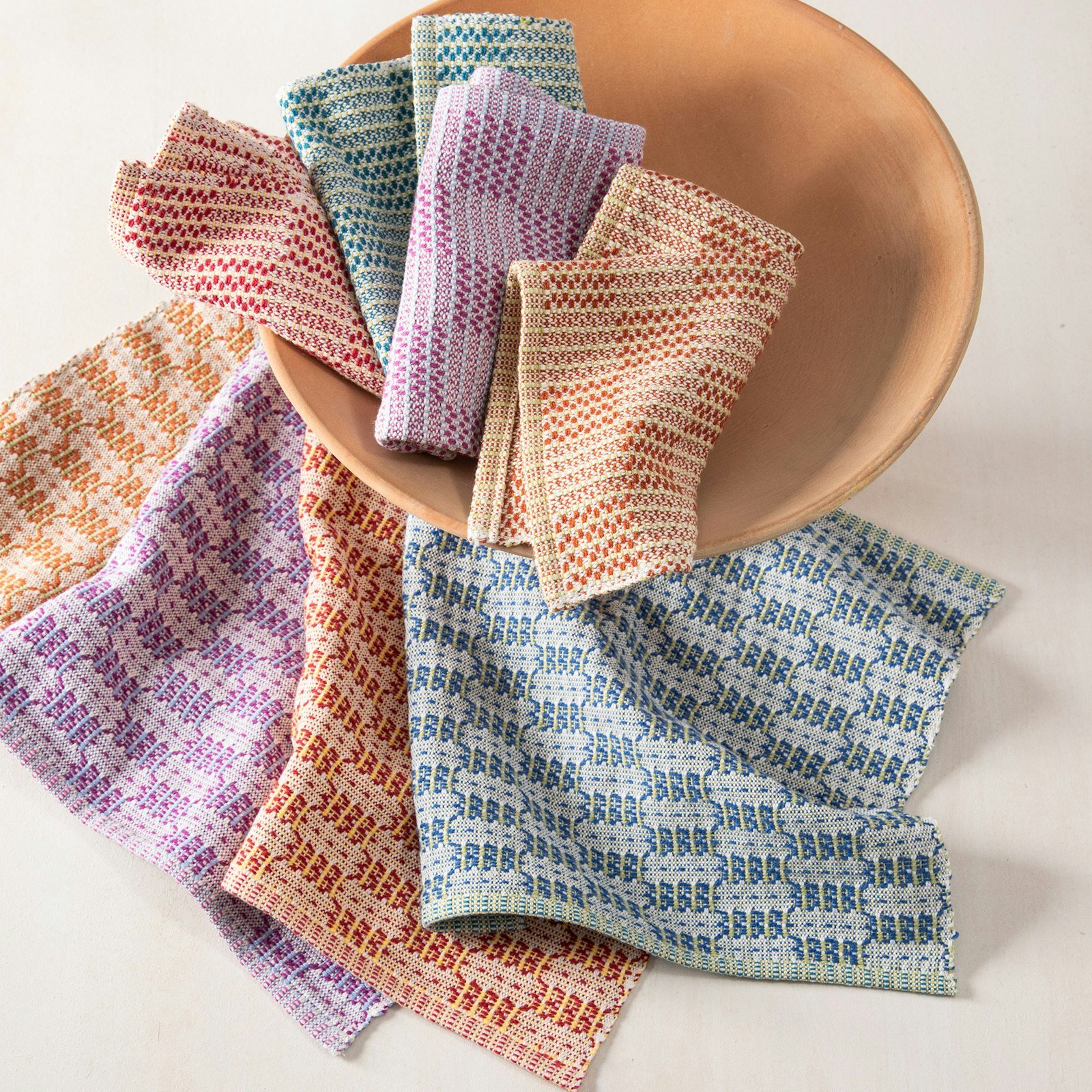Many fabrics shift light and color depending on how you view them, but for the September/October 2023 issue, we asked designers and authors to more purposefully address the effects of light mixed with cloth.
One way of capturing light on fabric is through floats, so it wasn’t surprising that many of the designers used that as a strategy. In this issue, you’ll find projects that use twill, satin, Ms and Os, and warp and weft floats, among other structures.
 Dorothy Tuthill’s Neon Incandescence scarf combines an astonishing array of fibers and colors to great effect.
Dorothy Tuthill’s Neon Incandescence scarf combines an astonishing array of fibers and colors to great effect.
Fiber choice is also important in creating light effects. Although some animal fibers, such as a smooth alpaca, reflect light, for the most part, wools and the like create a more matte woven finish. This explains the narrower fiber selection for most of the projects in the issue. Primarily the designers used cotton, silk, Tencel, and rayon. An outlier was Dorothy Tuthill’s Neon Incandescence scarf. Dorothy used Alpaca Silk, which contrasted beautifully with the shiny yarns in the scarf’s cells and the sequined yarn she used for weft in some blocks.
 Lovely against the skin and shimmery in light, chenille is a fabric to love...if you weave it correctly!
Lovely against the skin and shimmery in light, chenille is a fabric to love...if you weave it correctly!
If you are like me and you got so frustrated with chenille in the past that you threw away the cones of it in your stash, you’ll be interested in how Deborah Jarchow works with rayon chenille. Her Heavenly Harvest Chenille Poncho in the issue is gorgeous and will make you want to weave with chenille again, following her tips this time for a great outcome.
 Liz Moncrief had fun playing with neon colors in a log-cabin pattern.
Liz Moncrief had fun playing with neon colors in a log-cabin pattern.
The Yarn Lab for the issue basically contradicts my statements above about animal fibers but in a good way. I asked Liz Moncrief to play with the neon colors available from Brown Sheep Yarns in a DK-weight wool. She found that by using the bright colors sparingly and with intention, she was able to spice up what might be otherwise ordinary patterns.
D = Dobby suggested but not required.
You may have noticed in the project directory in the May/June 2023 issue and in this issue that we have added a “Dobby” label to the levels. Our definition of the label is “Dobby suggested but not required.” A dobby loom could be used to weave any multi-shaft project, but when I see a treadling that I believe would be difficult to track without a dobby, I mark it in the issue and in the Handwoven WIF library. That doesn’t mean you couldn’t weave the piece without a dobby, just that it might take patience and persistence!
Enjoy the September/October 2023 issue, an issue full of light and the joy of weaving beautiful cloth.
Weave well,
Susan

